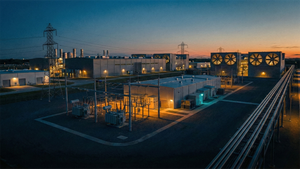The "Global Public Transportation Market Size, Share & Industry Trends Analysis Report by Mode Type (Road, Rail and Others), Ticket Distribution Channel (Offline and Online), Regional Outlook and Forecast, 2022-2028" report has been added to ResearchAndMarkets.com's offering.
The Global Public Transportation Market size is expected to reach $285.7 billion by 2028, rising at a market growth of 5.4% CAGR during the forecast period.
Public transit, Public transport also referred to as public transportation, mass transit, or simply transit is a transportation system for passengers by group travel systems available to the general public, as opposed to private transport, which is typically managed on a schedule, operated along established routes, and charges a posted fee per trip. City buses, trolleybuses, trams (or light rail) and passenger trains, fast transit (metro/subway/underground, etc.), and ferries are examples of public transportation.
Intercity transportation is dominated by airplanes, motor coaches, and intercity rail. In several regions of the world, high-speed rail networks are being constructed. The majority of public transportation systems operate on fixed routes with predetermined boarding and disembarking sites and according to a predetermined schedule, with the most frequent services adhering to a headway.
However, the majority of public transport journeys involve other modes of transportation, such as people walking or utilizing bus services to reach railway stations. In many regions of the world, share taxis offer on-demand services that may compete with permanent public transport lines or complement them by transporting customers to interchanges. Paratransit is occasionally employed in low-demand regions and for those who require door-to-door service.
Most public transport systems are operated by profit-driven, privately owned, and publicly traded mass transit and real estate corporations. Most local transportation administrations in North America operate mass transit services. Due to geographical, historical, and economic factors, the use and scope of public transportation vary widely.
COVID-19 Impact Analysis
During the most severe public health catastrophe caused by the new coronavirus pandemic, governments throughout the world have shut down public transportation systems. In addition, stringent social distance constraints have slowed the expansion of public vehicles.
As transmission rates increase in populated areas, public transportation will continue to decline shortly. Moreover, measures by groups such as working from home to prevent the spread of COVID-19 will further constrain the demand for public vehicles. Infrastructural development for public transport vehicles would be halted for a time owing to decreased government spending around the 0 as a result of the pandemic's economic impact.
Market Growth Factors
Increasing Megacity Demand For Public Transportation
In recent decades, the flow of people into urban regions and the rise of urban and metropolitan areas have increased dramatically. The growth of the market is attributable to the expansion of infrastructure and the advancement of technology. To address the demand for public transportation in megacities, several governments are building BRT, metro, monorail, and light rail transit systems.
Enhances Fuel Economy And Public Transportation's Capacity To Reduce Air Pollution
The capacity to outfit buses and other public vehicles with alternative fuel sources is one of the biggest technological advantages of public transportation. Some systems are entirely electric or fueled by renewable energy. Even relative to other gas-powered vehicles, the fuel economy of public transit is superior. Reduced gasoline use improves air quality in cities with integrated public transportation. Approximately 85 percent of transportation-related greenhouse gas emissions are caused by daily commutes.
Market Restraining Factors
Increasing Preference For Passenger Cars And Motorcycles
The increasing preference of commuters for passenger cars and two-wheeled vehicles are impeding the growth of the industry. In emerging nations, two-wheeled carts are the principal form of transportation for middle-class citizens. In addition, political regimes that are prejudiced against investments in public transportation. The distribution of Covid-19 had a significant influence on the growth of the public transportation industry.
Scope of the Study
By Mode Type
- Road
- Rail
- Others
By Ticket Distribution Channel
- Offline
- Online
By Geography
-
North America
- US
- Canada
- Mexico
- Rest of North America
-
Europe
- Germany
- UK
- France
- Russia
- Spain
- Italy
- Rest of Europe
-
Asia Pacific
- China
- Japan
- India
- South Korea
- Singapore
- Malaysia
- Rest of Asia Pacific
-
LAMEA
- Brazil
- Argentina
- UAE
- Saudi Arabia
- South Africa
- Nigeria
- Rest of LAMEA
Key Market Players
- BC Transit Corporation
- Transport International Holdings Limited
- Brussels Intercommunal Transport Company
- Metrolink
- Transdev Group SA (Caisse des Depots et Consignations)
- Tobu Railway Co., Ltd.
- Trenitalia c2c Limited
For more information about this report visit https://www.researchandmarkets.com/r/ltzv6x-public?w=4
View source version on businesswire.com: https://www.businesswire.com/news/home/20230126005739/en/
Contacts
ResearchAndMarkets.com
Laura Wood, Senior Press Manager
press@researchandmarkets.com
For E.S.T Office Hours Call 1-917-300-0470
For U.S./ CAN Toll Free Call 1-800-526-8630
For GMT Office Hours Call +353-1-416-8900






